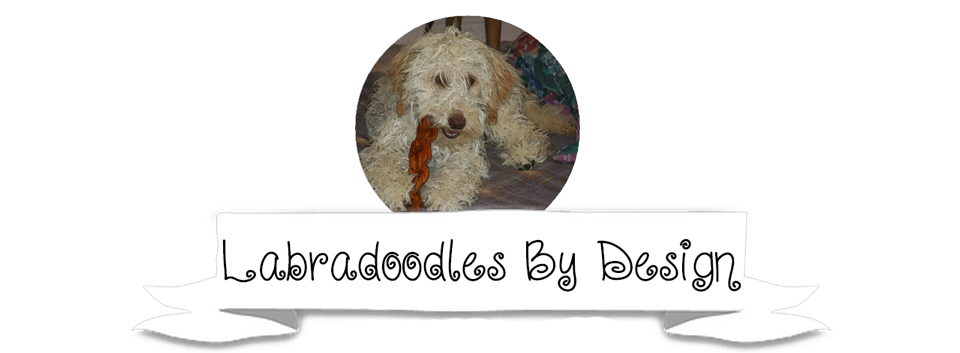Colors
NOTE: It is normal that all colors may show bleaching and discoloration over the topcoat, referred to as sunning, this is quite expected and acceptable. The Australian Labradoodle is an active dog and often a service dog that enjoys the outdoors.
Chalk
This color should be a white color but when compared to white is rather a chalky white in color. Nose pigment to be Black or Rose.
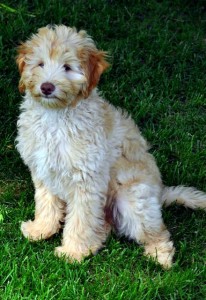 Cream
Cream
This color should be a creamy coloring sometimes with apricot/gold tinting, all shades of cream are acceptable. Nose pigment to be Black or Rose.
Gold
This color has also been referred to, as “apricot” should be the color of the inside of a ripe apricot to varying shades of rich Gold in color. A true Gold should not have a lighter root than the outer coat and preferable have an even coloration over the entire body. This color may fade as the dog grows older. Nose pigment to be black or brown in color.
Caramel
This color ranges from a rich gold through to a deep red the preferred color is very much the same color as its namesake “caramel” with even coloration over the entire body. Nose pigment to be Rose in color.
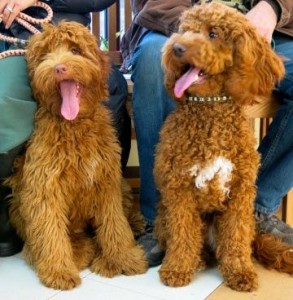 Red
Red
This color can be a solid or white marked rich red color. A true red should not be lighter at the root than the outer coat. Reds can fade as the dog grows older. Nose pigment to be Black and occasionally brown. [Rare color group]
Black
This color can be a solid black in color or with white markings in the coat. Nose pigment to be Black.
Blue
This color should be a dark to medium smoky blue in color. Blues are born Black but will have a Blue/Grey skin pigment. The blue coat color will develop over time (1-3yrs) but as a developed adult should have an even coat color. Nose pigment to be Blue/Grey [matching the skin pigmentation]. [Rare color group]
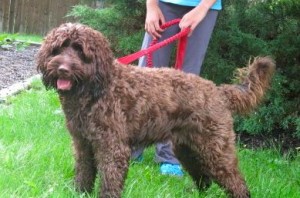 Silver
Silver
This color can range in shades from very light pewter in color to a dark charcoal in color, it is preferred to see an even color through the coat but acceptable to see uneven layering of color in the coat. Silvers are born Black with the coat color developing over time (1-3 yrs). Nose pigment to be Black.
Chocolate
This color should be a dark rich chocolate in color. True chocolates are born almost black in color and maintain the rich dark color throughout their lifetime. Color should be even. Nose pigment to be Rose in color [matching the coat color]. [Rare color group] Most chocolate puppies turn cafe over time.
Café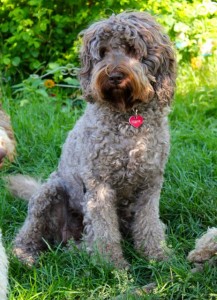
This color starts out as dark to milk chocolate andranges from a milk chocolate to silver-beige in color and will develop over time (1-3yrs). Nose pigment to be Rose in color [matching the coat color]. Color changes start about a year of age and can be so pretty!
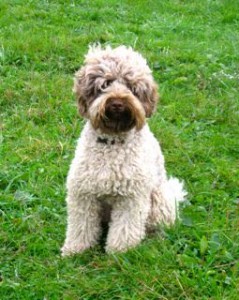 Lavender
Lavender
This color has a definite smoky lavender chocolate color giving an almost pink to lilac appearance. Lavender dogs are born chocolate and will develop over time (1-3yrs). Nose pigment to be Rose in color [matching the coat color]. [Rare color group]
Parchment
This color is a creamy beige chocolate color reminiscent of a cup of coffee with a generous addition of milk. Parchment dogs are born milk chocolate and will develop over time (1-3yrs). From a distance adult dogs can be mistaken for a dark or smoky cream. Nose pigment to be Rose in color. [Rare color group]
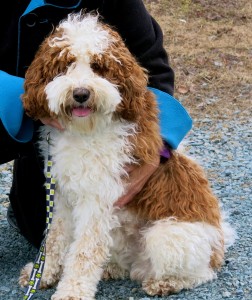 Parti
Parti
Parti-colored: At least fifty percent white, with spots or patches of any other acceptable solid color. The head can be of a solid color but white muzzle, blaze, or white muzzle/blaze combination (preferably symmetrical) are equally acceptable. . Any color nose pigment is acceptable but preferable to follow pigment requirements of the patch color. [Rare color group]
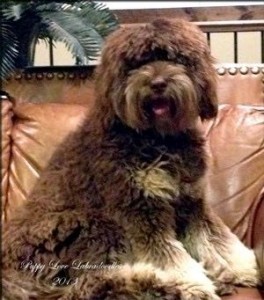 Phantom
Phantom
Phantom: Solid base color with sharply defined markings of a second color appearing above each eye, on the sides of the muzzle, on the throat and forechest, or in a chin and forechest bowtie pattern as well as on all four legs and feet, and below the tail. A phantom without clearly defined face markings or one that presents with its whole face colored in the second color is acceptable, as long as it maintains all the other specified body markings. Any combination of acceptable colors is allowed. Nose pigment to follow pigment requirements of the Solid base color. [Rare color group]
